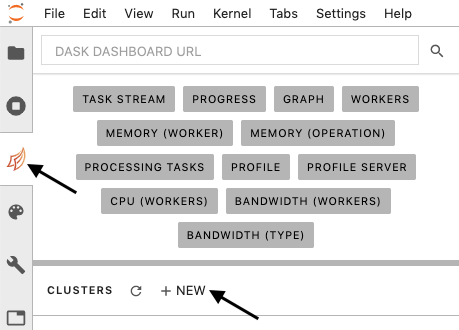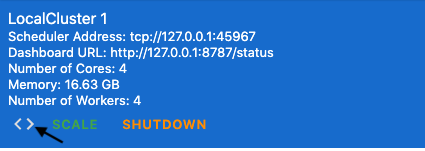"
]
},
{
"cell_type": "markdown",
"metadata": {},
"source": [
"# PyRosettaCluster Tutorial 1A. Simple protocol\n",
"\n",
"PyRosettaCluster Tutorial 1A is a Jupyter Lab that generates a decoy using `PyRosettaCluster`. It is the simplest use case, where one protocol takes one input `.pdb` file and returns one output `.pdb` file. \n",
"\n",
"All information needed to reproduce the simulation is included in the output `.pdb` file. After completing PyRosettaCluster Tutorial 1A, see PyRosettaCluster Tutorial 1B to learn how to reproduce simulations from PyRosettaCluster Tutorial 1A."
]
},
{
"cell_type": "markdown",
"metadata": {},
"source": [
"*Warning*: This notebook uses `pyrosetta.distributed.viewer` code, which runs in `jupyter notebook` and might not run if you're using `jupyterlab`."
]
},
{
"cell_type": "markdown",
"metadata": {},
"source": [
"*Note:* This Jupyter notebook uses parallelization and is **not** meant to be executed within a Google Colab environment."
]
},
{
"cell_type": "markdown",
"metadata": {},
"source": [
"*Note:* This Jupyter notebook requires the PyRosetta distributed layer which is obtained by building PyRosetta with the `--serialization` flag or installing PyRosetta from the RosettaCommons conda channel \n",
"\n",
"**Please see Chapter 16.00 for setup instructions**"
]
},
{
"cell_type": "markdown",
"metadata": {},
"source": [
"*Note:* This Jupyter notebook is intended to be run within **Jupyter Lab**, but may still be run as a standalone Jupyter notebook."
]
},
{
"cell_type": "markdown",
"metadata": {},
"source": [
"### 1. Import packages"
]
},
{
"cell_type": "code",
"execution_count": 7,
"metadata": {},
"outputs": [],
"source": [
"import bz2\n",
"import glob\n",
"import logging\n",
"import os\n",
"import pyrosetta\n",
"import pyrosetta.distributed.io as io\n",
"import pyrosetta.distributed.viewer as viewer\n",
"\n",
"from pyrosetta.distributed.cluster import PyRosettaCluster\n",
"\n",
"logging.basicConfig(level=logging.INFO)"
]
},
{
"cell_type": "markdown",
"metadata": {},
"source": [
"### 2. Initialize a compute cluster using `dask`\n",
"\n",
"1. Click the \"Dask\" tab in Jupyter Lab (arrow, left)\n",
"2. Click the \"+ NEW\" button to launch a new compute cluster (arrow, lower)\n",
"\n",
"\n",
"\n",
"3. Once the cluster has started, click the brackets to \"inject client code\" for the cluster into your notebook\n",
"\n",
"\n",
"\n",
"Inject client code here, then run the cell:"
]
},
{
"cell_type": "code",
"execution_count": 8,
"metadata": {},
"outputs": [
{
"data": {
"text/html": [
"
\n",
"Client\n", "
| \n",
"\n",
"Cluster\n", "
| \n",
"
"
]
}
],
"metadata": {
"kernelspec": {
"display_name": "Python [conda env:PyRosetta.notebooks]",
"language": "python",
"name": "pyrosetta.notebooks"
},
"language_info": {
"codemirror_mode": {
"name": "ipython",
"version": 3
},
"file_extension": ".py",
"mimetype": "text/x-python",
"name": "python",
"nbconvert_exporter": "python",
"pygments_lexer": "ipython3",
"version": "3.7.6"
}
},
"nbformat": 4,
"nbformat_minor": 4
}